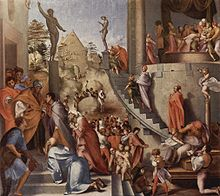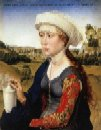Art is a very wide discipline that is used to convey messages in current communities or remind people of how things used to be some years back. Through art, the current generation can learn the culture of earlier generations. The future generations will also be able to know the culture and religions of the present generation by studying the art pieces which are being created by the present generation. Artworks of earlier civilizations are currently preserved in various museums around the world. The artworks give a lot of information about the people who lived during those early civilizations. Artworks in early civilizations revolved around religion, leadership and the general culture of a given society. However, artworks have not been always the same throughout the world. It is on this basis that this piece of work describes the cultures and arts of the Italian Renaissance and Northern European renaissance.
In early years there were various genres of artworks that were done in Italy. For example sculpture, painting and architecture were some of the art pieces that were common in Italy. Another category of art that was common in Italy is performance art which was a form of art that had both features of songs and poems. The performance art was known as opera and it has given Italy an identity throughout the world to an extent that it is now referred to as ‘Italian opera’. The Italian opera was a type of song that was composed with verses similar to a poem (Smith, 2005). The lyrics of the opera were mostly in praise of the beauty of a bride and sometimes they were in praise of a bridegroom.
Art renaissance in Italy began very many years ago at the time when Italy did not actually exist as a state but as a combination of many autonomous city-states such as, Vatican, Rome and Florence (Guillermo, 2005). Arts in other parts of Europe other than Italy are generally referred to as arts of the Northern European renaissance. Artworks have always been used to convey messages to the people and therefore artists always try to convey the intended message as accurately as possible. This is one aspect of art that was always considered by artists in Italy and Northern Europe (Guillermo, 2005).
Painting is one category of art that was used during Italian renaissance to convey messages concerning religion.

This is a painting showing the images containing Joseph in Egypt after being sold by his brothers (Smith, 2005). This is a good example of Italian renaissance painting which reveals that Italians believed in the teachings that were found in the bible. Most Italians were basically Christians and most paintings were done to convey messages about Christianity. During the time of art renaissance in Italy, most artworks that included paintings were the improvements made from ancient Greek and ancient Roman arts. Some notable artists made major contributions to the arts of the Italian renaissance and their artworks are currently preserved in museums in Italy and other major museums around the world. An example of such artist is Leonardo who painted the images of the scene of ‘The Last Supper which was a scene of Jesus Christ taking the last meal together with His disciples before being betrayed by Judas Iscariot.
Arts of the Northern European renaissance were similar to those of Italian Renaissance in the sense that in both cases art was used to convey some specific messages to particular groups of people. In both two regions, art served the same purpose concerning religion because paintings showing religious events and sacred places of worship were done the same way. In addition, paintings that were done on fine-weaves in Italy were very much similar to paintings that were done on canvas in the Netherlands (Boardman, 1998). Sculptures of temples in Italy were also made in similar ways as sculptures of temples in Northern Europe.
The major difference that existed between the arts of Italy and Northern Europe renaissances was the languages that were being used to describe the artworks. After a sculpture or a painting was made, it was usually described by a few words written below it. During arts renaissance in Italy, Greek and Latin were the two major languages that were used to describe artworks. On the other hand, artists in Northern Europe used vernacular to describe their artworks. The widespread use of vernacular languages in Northern Europe influenced the formation of new nations in which particular vernacular languages were being spoken (Boardman, 1998).

This is an image of Mary Magdalene whose story is found in the New Testament of the bible. It is an art piece from Northern Europe and below it, writings were made in the German language to describe it (Boardman, 1998).
Another notable difference between the two art renaissances is that arts in Northern Europe represented political powers that were centralized but in Italy there were various arts from city-states that existed independently. For example, in Italy arts from the city of Rome were different from those in Florence which also existed as an independent city-state. Art of the Northern European renaissance focused on the protestant reformation of Christianity while art in the Italian renaissance was more linked to the faith of the Roman Catholic Church than any other faith (Smith, 2005).
In conclusion, it is important to note the relationship between arts of Italian and Northern European renaissance is that both regions borrowed art techniques from each other. For example, ‘Gothic painting’ started in Northern Europe before it spread to Italy. The emergence of new nation-states due to arts in Northern Europe influenced the unification of city-states in Italy to form a unified Italy with a central government.
Reference List
- Boardman, J., 1998. The Late Classical Period and Sculpture in Colonies and Overseas. London: Thames & Hudson.
- Guillermo, G., 2005. Art and Experience in Classical Greece. Routledge, London: Woodlands publishing Company.
- Smith, R., 2005. Legendary Artists and their Impacts on Civilizations. New York: W.B. Saunders Company.